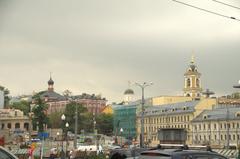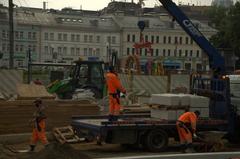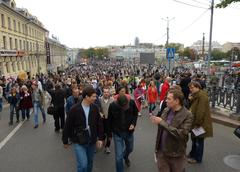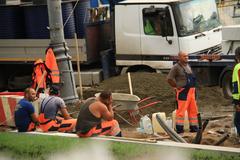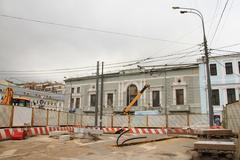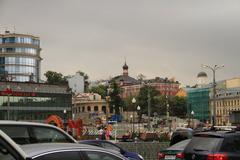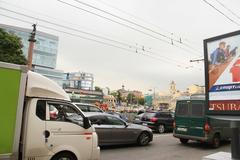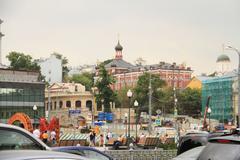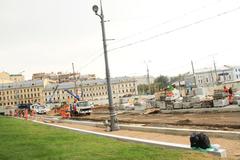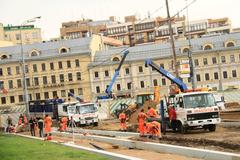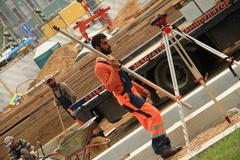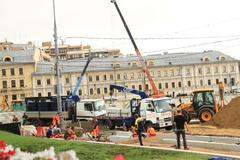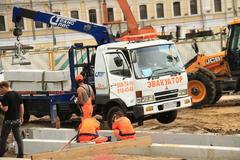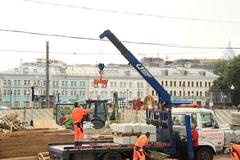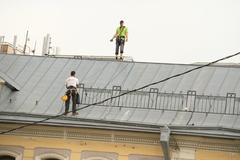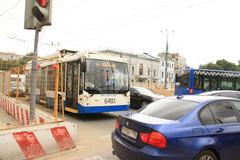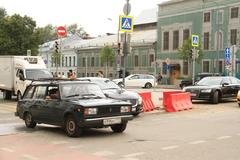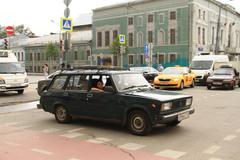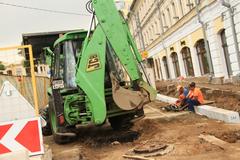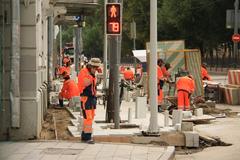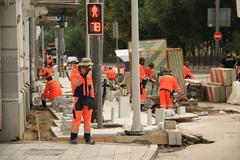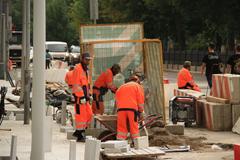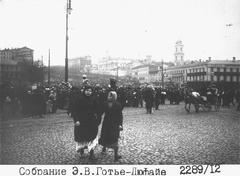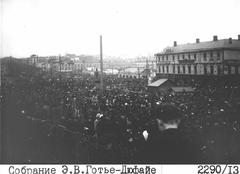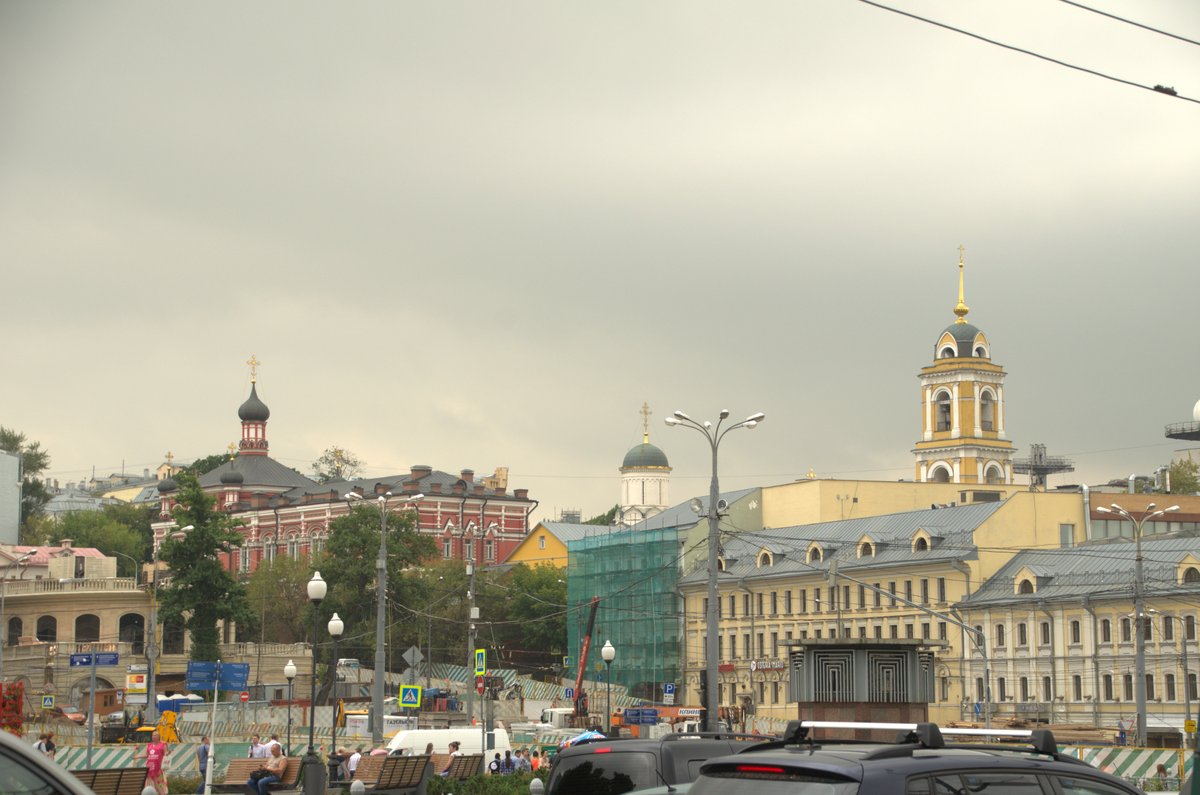
Trubnaya Square Moscow: Comprehensive Visiting Guide, Hours, Tickets, and Historical Sites
Date: 14/06/2025
Introduction
Trubnaya Square, at the intersection of Moscow’s Boulevard Ring and Tsvetnoy Boulevard, is a vibrant emblem of the city’s layered history and contemporary culture. With origins in the late 16th century, the square’s name—derived from the Russian word “truba” (“pipe”)—reflects its unique architectural solution for the Neglinka River, which once flowed beneath Moscow’s defenses. Over centuries, Trubnaya Square has transformed from a riverside market and transport hub into a dynamic urban space, renowned for its blend of historical landmarks, cultural venues like the Yuri Nikulin Moscow Circus, and modern conveniences such as the architecturally striking Trubnaya Metro station.
This guide provides a detailed overview of Trubnaya Square’s history, significance, practical visiting information, and nearby attractions, ensuring a rich and rewarding experience for all visitors (en.unansea.com; irmanaanworld.com; en.wikipedia.org).
Table of Contents
- Early Origins and Urban Development
- 18th–19th Century Transformation
- Architectural and Cultural Landmarks
- Political and Social Significance
- The Neglinka River’s Hidden Legacy
- Modern Era: Metro and Urban Life
- Visiting Trubnaya Square: Practical Information
- Nearby Attractions and Events
- Frequently Asked Questions (FAQ)
- Conclusion and Final Tips
- References
Early Origins and Urban Development
Trubnaya Square’s story begins in the late 16th century. As Moscow expanded, the square emerged along the Neglinka River, bounded by the White City wall. The construction of a “pipe” (truba) through the wall allowed the river to pass beneath the fortifications, lending the square its name. The area quickly blossomed into a commercial hub, with the Pipe Market trading timber and firewood—vital resources for the city’s growth (en.unansea.com).
18th–19th Century Transformation
With the demolition of the White City wall in the late 18th century, the area underwent major changes. The Neglinka River became increasingly polluted as waste was dumped into its open channel, prompting public health concerns and calls for urban improvement. Although Catherine II proposed embankments and fountains, these were never fully realized. Eventually, the Neglinka was placed underground, freeing up valuable surface land for further development (en.unansea.com; rbth.com).
In the 19th century, Trubnaya Square became a vital transport hub with the introduction of Moscow’s first horse-drawn tramways. The area’s market expanded, welcoming flower and bird vendors and reflecting Moscow’s growing population and changing urban landscape.
Architectural and Cultural Landmarks
Trubnaya Square is surrounded by a diverse collection of buildings, each representing a different period in Moscow’s evolution:
- The Hermitage Restaurant: Once located at the square’s corner, this 19th-century French restaurant was famous for its aristocratic clientele and as the birthplace of the Olivier salad (en.unansea.com).
- House with Pregnant Caryatids: This architectural oddity, once home to a well-known brothel, exemplifies the area’s colorful social history.
- Nikulin Moscow Circus: Founded in 1880 and located on Tsvetnoy Boulevard, this iconic circus remains a top cultural destination (irmanaanworld.com).
- Public Art and Monuments: The monument “Grateful Russia to the Soldiers of Law and Order,” a bronze stele honoring fallen law enforcement officers, anchors the square’s public memory (en.unansea.com).
Political and Social Significance
Trubnaya Square has often been a focal point for Moscow’s political and social life. Most notably, it was the tragic site of a deadly stampede during Joseph Stalin’s funeral in 1953, with casualty estimates ranging widely. While not marked by a large memorial, this event remains a significant part of the square’s collective memory (The Sangha Kommune).
The Neglinka River’s Hidden Legacy
The Neglinka River, once visible at Trubnaya Square, was notorious for flooding before it was finally tunneled underground in the 1860s. Today, its presence is only hinted at in the urban landscape, but its role in shaping the area is still commemorated in the square’s name and history (rbth.com).
Modern Era: Metro and Urban Life
Today, Trubnaya Square is a key transport node, anchored by the Trubnaya Metro Station (opened in 2007) on the Lyublinsko-Dmitrovskaya Line. The station’s Art Nouveau design features stained-glass mosaics and elegant marble finishes, reflecting Moscow’s tradition of monumental public works (en.wikipedia.org).
The square itself is a lively venue for events, dining, shopping, and cultural exploration. The area blends pre-revolutionary, Soviet, and modern architecture, and is home to green spaces, public art, and a thriving café scene (irmanaanworld.com; wanderlog.com).
Visiting Trubnaya Square: Practical Information
Visiting Hours
Trubnaya Square is a public space accessible 24/7. Major attractions nearby, such as the Nikulin Circus, generally operate from 11:00 AM to 9:00 PM. Always check official websites for up-to-date hours, especially for seasonal events.
Tickets and Entry Fees
Access to the square itself is free. Tickets are required for attractions like the Nikulin Circus or performances at Theatre of Nations. Advance booking is recommended for popular events.
Accessibility
The square and its surroundings are wheelchair accessible, with ramps, wide sidewalks, and accessible entrances to most venues and the metro station (travellersworldwide.com).
Getting There
- Metro: Trubnaya Station (Line 10) is the most convenient access point.
- Bus/Trolleybus: Multiple routes serve the area.
- Taxi/Rideshare: Widely available throughout Moscow.
Safety
The area is generally safe and well-lit, though visitors should be alert in crowds and at night.
Nearby Attractions and Events
- Hermitage Garden: A tranquil park with open-air theaters and seasonal events.
- Tsvetnoy Central Market: Upscale shopping and gourmet food hall.
- Rozhdestvensky & Petrovsky Boulevards: Historic boulevards perfect for strolling.
- Sandunovsky Baths (Sanduny): Legendary Russian baths with opulent interiors (Sanduny Official Site).
- Kitay-Gorod & Kuznetsky Most: Bohemian neighborhoods and premier shopping streets.
Throughout the year, Trubnaya Square hosts public events such as holiday markets, open-air concerts, and art installations. Check local listings for current happenings.
Frequently Asked Questions (FAQ)
Q: What are the visiting hours for Trubnaya Square?
A: The square is accessible 24 hours a day, year-round.
Q: Is there an entrance fee to visit the square?
A: No, entry is free. Tickets are only needed for performances or special events in nearby venues.
Q: How do I get to Trubnaya Square?
A: Use the Trubnaya Metro Station (Line 10), or access the area via bus, trolleybus, taxi, or on foot.
Q: Are guided tours available?
A: Yes, many Moscow walking tours include Trubnaya Square and its surroundings.
Q: Is the square wheelchair accessible?
A: Yes, the area and Metro station are equipped for accessibility.
Conclusion and Final Tips
Trubnaya Square is a microcosm of Moscow’s rich history and vibrant present. Its unique blend of architectural styles, cultural venues, and public art make it a must-visit for anyone interested in the city’s evolution. With free 24/7 access, excellent transportation links, and proximity to key attractions like the Nikulin Circus and Hermitage Garden, Trubnaya Square is an ideal starting point for exploring Moscow’s multifaceted urban landscape.
For the latest updates on events, tickets, and travel tips, download the Audiala app and follow our social media channels.
References
- Trubnaya Square in Moscow: History, Visiting Hours, Tickets, and Attractions Guide (en.unansea.com)
- Trubnaya (Moscow Metro), Wikipedia
- What to See in Moscow, Irmanaanworld
- Moscow Region: A Glimpse into Its History and Culture, How To Russia
- 10 Surprising Facts About Moscow, Russia Beyond
- Tourist Attractions in Moscow, Touropia
- Is Moscow Safe to Visit?, Travellers Worldwide
- USSR Stalin’s 1953 Funeral and the Resulting Stampede, The Sangha Kommune
- Wanderlog: Trubnaya Place Details
- Sanduny Official Site
